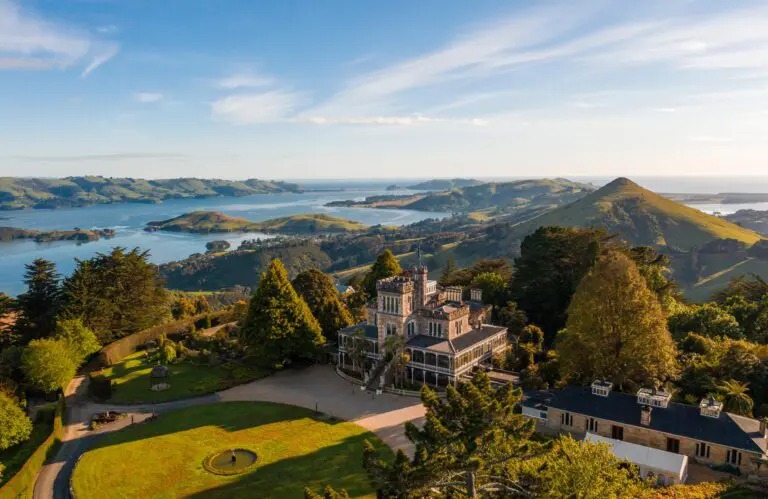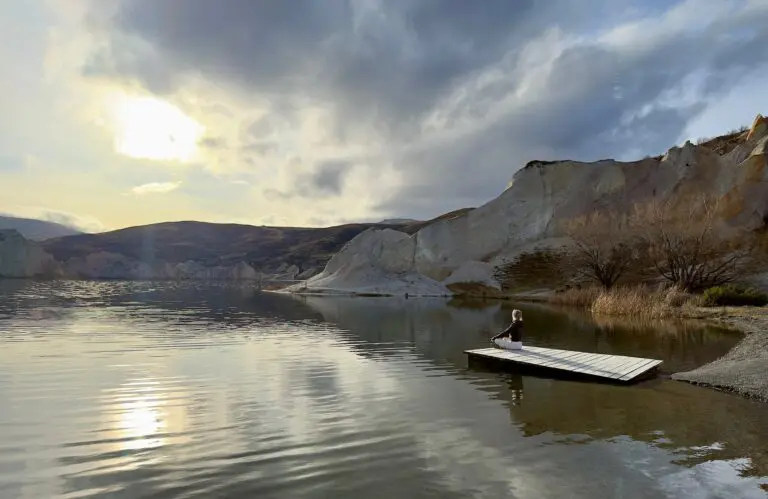Whether you’re a lover of history, adore everything about Europe or simply lose yourself in stories of the past, this digital wizardry will help you travel back in time (without touching the stones of ‘Craigh Na Dun’) and picture yourself at these majestic old castles.
Thanks to the clever modern folk (designers and architects) over at Budget direct and the wonders of CGI, you can now picture what seven of Europe’s most impressive ruined castles would have been like, back in the day.
From France to Romania and Scotland to Croatia, the built landscape of Europe has been sculpted by thousands of years of war & reconciliation.
Built by workers’ bare hands, the stones of these castles hold stories and mystic knowledge of century after century.
Once magnificent homes of riches and royalty; now in ruin after suffering years of war damage, neglect, and abandonment.
But gosh, that sounds a little bit deep, so let’s take a look at what they would look like if they were reconstructed in 2020.
Samobor Castle, Samobor, Croatia

The Kingdom of Bohemia was a medieval monarchy that ruled over the parts of the modern-day Czech Republic and Germany from the end of the 12th century until the First World War.
The Bohemian ruler Ottokar built Samobar Castle in the mid-13th century, during a war over the disputed Duchy of Styria. But he soon lost it to Croatian-Hungarian forces.
Click here for more information.
Château Gaillard, Les Andelys, France

A medieval masterpiece; Château Gaillard was built by Richard the Lionheart built between 1196 and 1198 to defend against Philip II of France.
The name of the castle; Gaillard, is a term that has been defined in numerous ways, most often as “saucy” but also as “cheeky,” “gallant,” “impudent,” “strapping,” and “defiant.”
The castle saw a lot of action before finally being abandoned in the 16th century and later demolished by Henry IV of France.
Click here for more information.
Dunnottar Castle, Stonehaven, Scotland

Dunnottar is a fort, perched on a ‘sea girt’ looking out into the North Sea from the east coast of Scotland.
Built somewhere between 1400-1600, the castle has been besieged by both William ‘Braveheart’ Wallace and Oliver Cromwell.
The castle has played a pivotal role in tensions between the English and the Scottish over the years and is also where the Scottish crown jewels were smuggled to safety in the 17th century.
Click here for more information.
Menlo Castle, Galway City, Ireland

According to the Atlas Obscura, ‘The 16th-century castle was the home of the Blake family, English nobles that inhabited the Menlo estate (also called Blake Castle) from 1569 up until a fire destroyed the castle in 1910, tragically taking the life of the Blake’s disabled daughter, Eleanor, whose body was never found.’
Click here for more information.
Olsztyn Castle, Olsztyn, Poland

The Olsztyn castle was built in the Gothic style, sometime before 1306. Set on a dramatic hill, the castle overlooks the Łyna River in northeastern Poland.
It was expanded by Casimir the Great between 1349-59 to defend against the Czechs. Olsztyn later gained a military garrison and was renovated in the Renaissance style in the 16th century.
Click here for more information.
Spiš Castle, Spišské Podhradie, Slovakia

The now UNESCO-listed Spiš Castle is one of the world’s largest castle complexes. Built-in the 12th century, its magnitude served the purpose of a border fortress in the feudal Hungarian Kingdom.
It was owned by the Csák family and in decline when fire finally ruined the building in 1780, perhaps the result of a lightning strike.
Click here for more information.
Poenari Castle (Poenari Fortress), Valachia, Romania

History, legend, and fiction have weaved together in this majestic spot.
Built-in the 13th century, legendary Poenari Castle once belonged to Vlad the Impaler, the Voivode (Duke) of Wallachia, who inspired Bram Stoker’s Count Dracula. The castle is said to create an uneasy sense of isolation as you climb the 1,480 concrete stairs to the clifftop castle’s eagle nest position.
Poenari Castle really epitomises what stories are made of.
Click here for more information.
The history of each castle is embedded in their remains. Being able to picture them in their true form, enables us to imagine what life would be like at that time.
Pretty cool, right?
Which castle would you most like to step back in time and visit?





